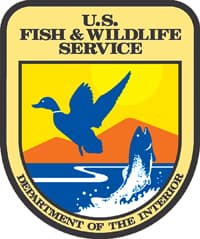U.S. Fish and Wildlife Service Announces Critical Habitat Designation for Dusky Gopher Frog
OutdoorHub 06.11.12

The U.S. Fish and Wildlife Service is designating critical habitat for the endangered dusky gopher frog, commonly known as the Mississippi gopher frog. A total of 6,477 acres are designated within two states, including Louisiana’s St. Tammany Parish and Mississippi’s Forrest, Harrison, Jackson, and Perry counties.
Of the total acreage designated, 3,501 acres are in federal ownership, 264 are on state property, and 2,711 acres are privately owned. About half of the lands in the critical habitat designation are part of the DeSoto National Forest. Occupied habitat and currently unoccupied habitat are essential for the conservation of the dusky gopher frog and, as such, both are designated as critical habitat.
“Identifying areas essential to the dusky gopher frog is an important milestone toward recovery for this species,” said Cindy Dohner, Southeast Regional Director of the U.S. Fish and Wildlife Service. “Our partners, including the U.S. Forest Service’s DeSoto National Forest, U.S. Army Corps of Engineers, Mississippi Department of Wildlife, Fisheries, and Parks, and several private landowners, are working to conserve this unique species and its habitat. We look forward to continuing and strengthening these partnerships and conservation efforts.”
Historically, the dusky gopher frog was found in Louisiana, Mississippi, and Alabama, west of the Mobile River drainage. The dusky gopher frog is a darkly-colored, moderately-sized frog with warts covering its back and dusky spots on its belly. It lives underground in pine forests, historically dominated by longleaf pine, and breeds in small temporary ponds. The Dusky (Mississippi) gopher frog was listed as endangered under the Endangered Species Act on December 4, 2001, as a distinct population segment (DPS) of the gopher frog.
To address the wide-ranging potential economic impacts, Industrial Economics, Inc. estimated potential economic impacts of designating Louisiana’s Unit 1 as critical habitat according to three scenarios: (1) no federal nexus existing for land development, (2) federal nexus present (likely a Clean Water Act permit) but minimization of impacts through consultation, and (3) federal nexus present but no minimization of impacts to habitat, resulting in a possible adverse modification decision by the Service.
The Final Economic Analysis estimates the present value of impacts associated with the critical habitat designation range up to $34 million total (under Scenario 3).
A proposed rule to designate critical habitat for the Mississippi gopher frog, now known as the dusky gopher frog, was published on June 3, 2010
(75 FR 31387) as part of the settlement of a lawsuit filed by the Center for Biological Diversity and Friends of Mississippi Public Lands, which alleged failure to designate critical habitat in a timely manner. New information was received during the comment period for the proposed rule which indicated that the amount of critical habitat proposed was insufficient for the conservation of this gopher frog. Based on this new information, the Service requested an extension of the settlement agreement from the plaintiffs in order to conduct an assessment of the new data and to write a revised proposed critical habitat determination. As part of the extension agreement, the revised proposed critical habitat rule was published on September 27, 2011. The Service was required to submit a final critical habitat rule to the Federal Register by May 30, 2012.
Critical habitat is a term defined in the Endangered Species Act. It refers to specific geographic areas that are essential to the conservation of a threatened or endangered species. The designation of critical habitat will help ensure federal agencies and the public are aware of the dusky gopher frog’s habitat needs and proper consultation is conducted by federal agencies when required by law.
A critical habitat designation does not set up a preserve or refuge and only applies to situations where federal funding or a federal permit is involved. It does not allow government or public access to private land.
Federal agencies that undertake, fund or permit activities that may affect critical habitat are required to consult with the Service to ensure such actions do not adversely modify or destroy designated critical habitat.
Since the dusky gopher frog is listed under the Act, it is already protected wherever it occurs. Federal agencies are required to consult on any action taken that might affect the species, whether or not critical habitat is designated.
The complete final rule appears in the Federal Register on June 12, 2012, and can be obtained by visiting the Federal eRulemaking Portal: http://www.regulations.gov at Docket Number FWS–R4–ES–2010–0024. A copy also can be obtained by contacting U.S. Fish and Wildlife Service, 6578 Dogwood View Parkway, Suite A, Jackson, Mississippi 39213; phone 601-321-1121.

